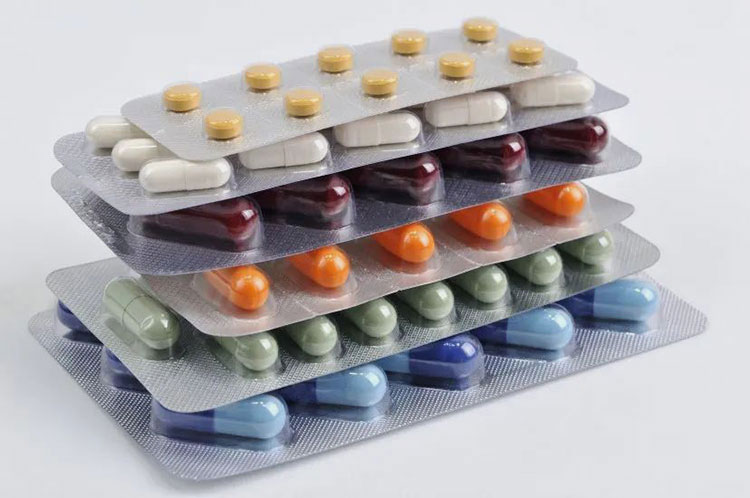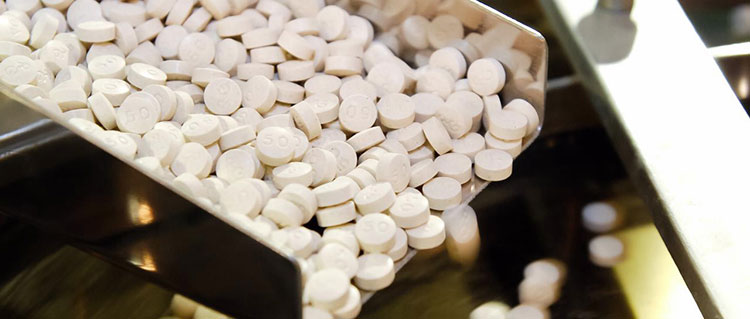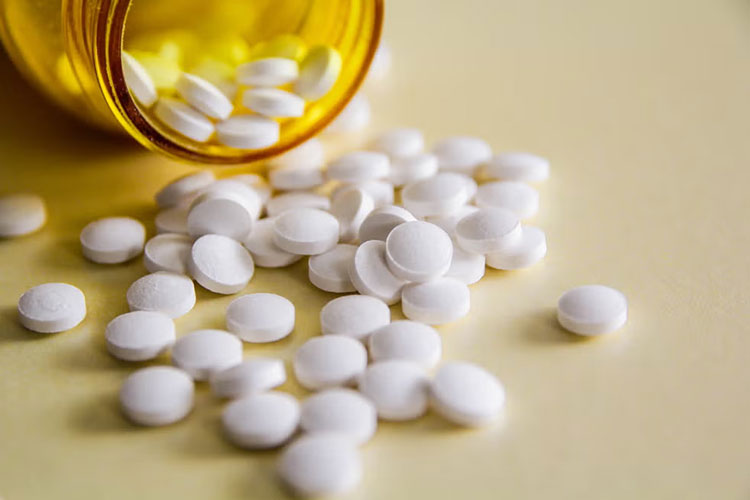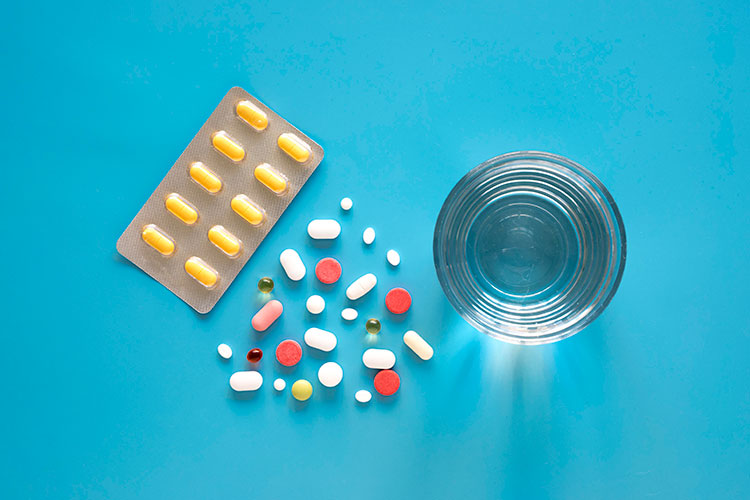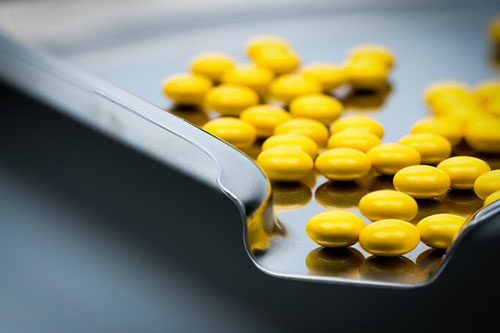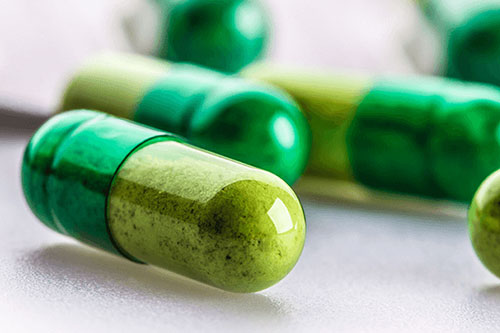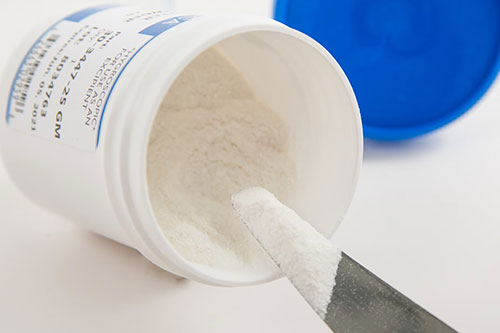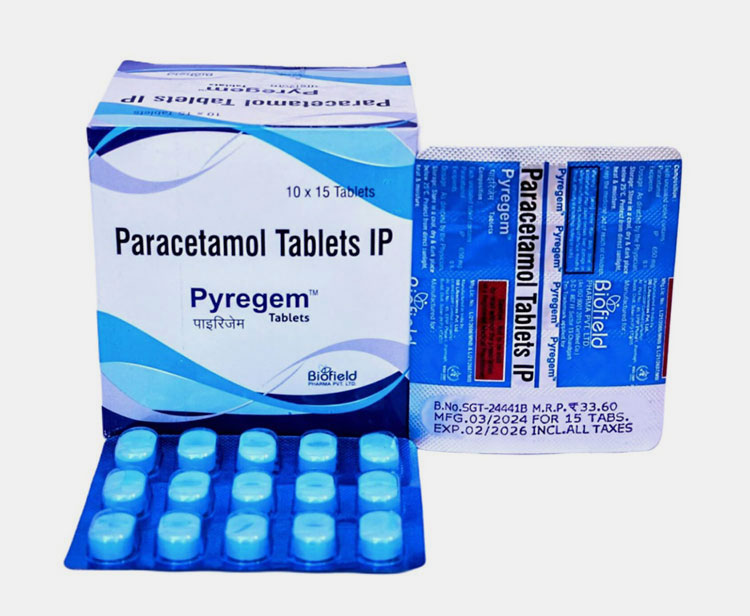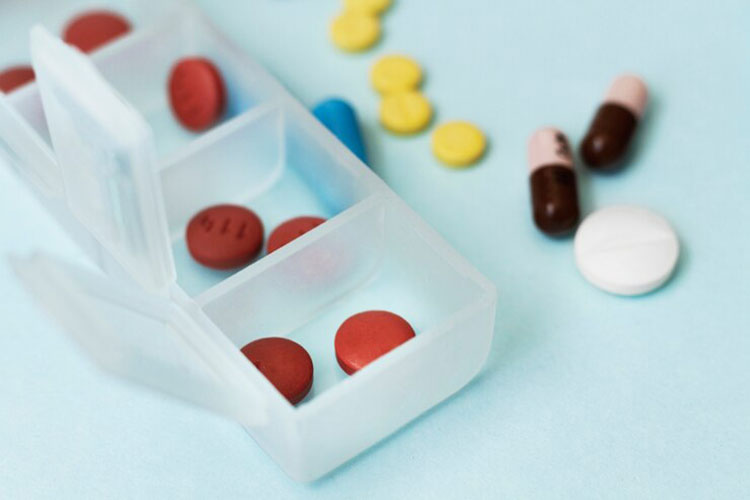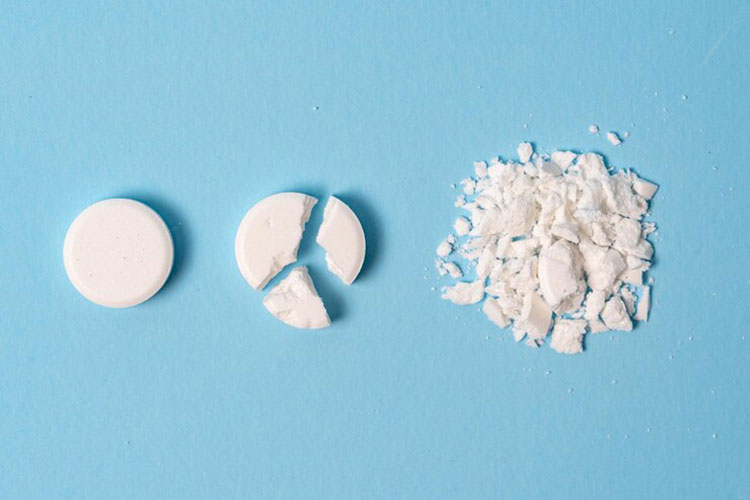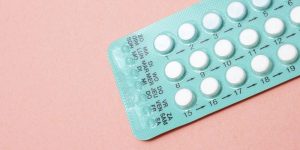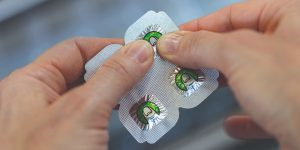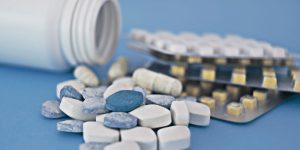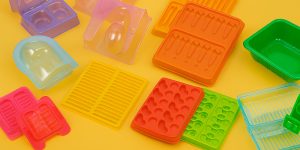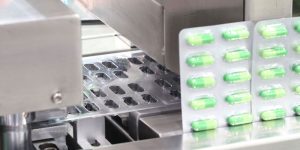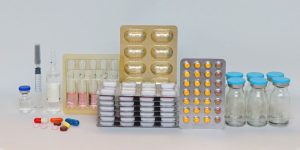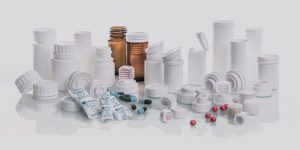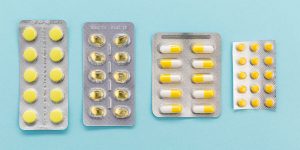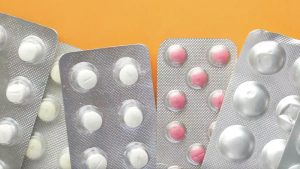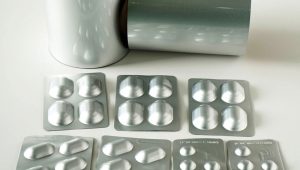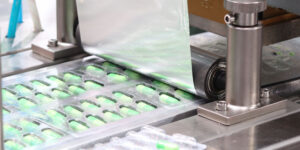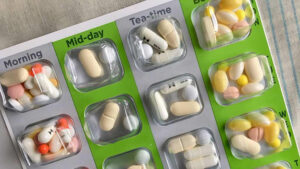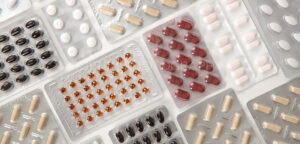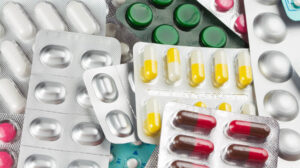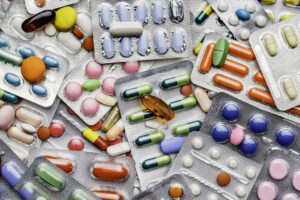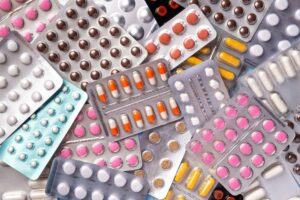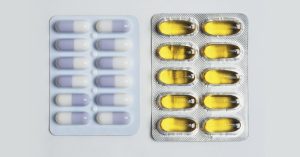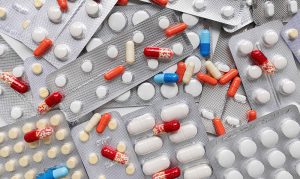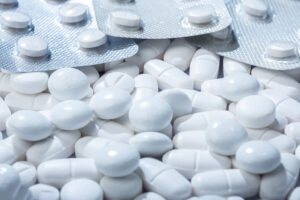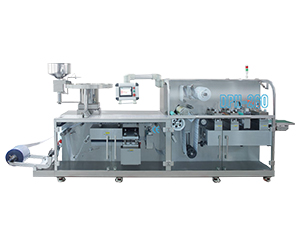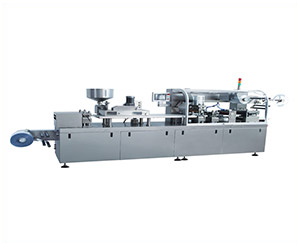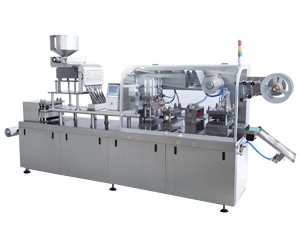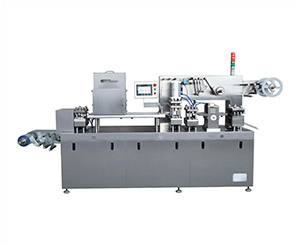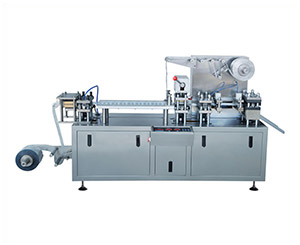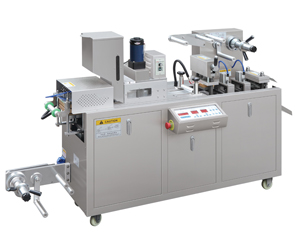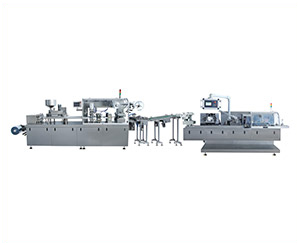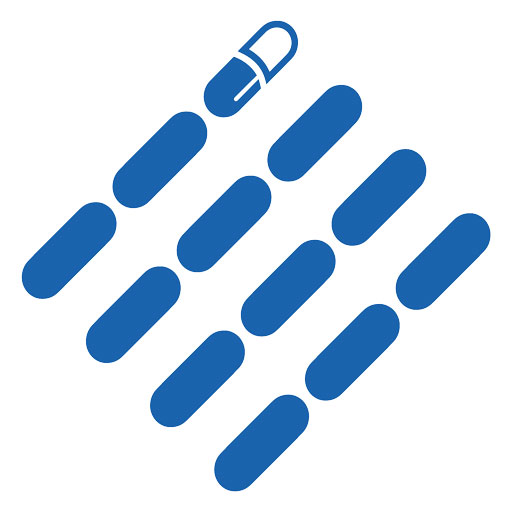How long do tablets last out of blister pack?
Have you ever peeled a tablet from its blister pack and left the tablet on the table, and later you wondered is it really safe to use? The blister packaging is not just a sheet of aluminum but it is also a promise to shield and safeguard the powerful medicines and tablets. The most commonly asked question is, how do tablets last out of blister pack? So, in this blog, we will uncover the truth behind it, the affects that should be considered and when to use and to discard. You should not just look for the expiration date mentioned on the tablet blister packs. This is the guide that will provide you every information regarding the tablet smarter and safer use.
1.What is the function of blister packaging in medicine Storage?
Tablets package in blister packs- Picture courtesy: packagingcoders.com
The medicines are packaged in the blister packs because it protect the tablets, pills and capsules from external environment. Some medications are sensitive to light and humidity but blister packs protect them. It can also protect them from contamination because only one dose being used is touched. You can easily separate the dose so, the blister packs provide convenience in this way.
2.What is the purpose of blister packaging?
Tablets blister packaging -Picture courtesy: amcor.com
The blister packaging is used for preserving the tablets against the following environmental agents. These are as follows:
| Protection | Description |
| Superior moisture and oxygen protection | The blister pack have a cavities that are filled with individual tablet and is protected with aluminum foil. Individual tablet is protected from light and humidity which can’t be provided by other packages like bottles. When you open the bottle for removing the tablet, each tablet in the bottle is exposed to light and air which accelerate the degradation. |
| Light sensitive medication safety | The blister packs are covered with an aluminum foil which stops the UV and visible light from entering and exposing the tablet which is not possible in other packaging. The UV light might penetrate and exposed the tablets which can impact the effectiveness of the tablets. |
| Dose accuracy and patient compliance | Blister packs can be labeled with a dose or days of the week which is essential for some treatments like intake of antibodies etc. whereas the tablets in bottles, you should manually track the dose and chances of dosage missing is increasing which is risky. |
| Reduced risk of contamination | Each tablet or pills are sealed within the compartment and when you are taking the tablet, only that pill can be touched but if you are taking the pill from the bottle or other packaging, the pills have equal probability to touch with the finger which can cause contamination. |
| Tamper evidence | Any damage to the aluminum foil of the blister packs can easily be investigated which the highest advantage you can get from the blister packaging. |
| Portability and convenience | The blister packs can easily be fold, cut and fit into your wallets and can be used during travelling which is not possible in other packages like bottle which is bulk and risk of spilling occur if it dropped. |
3.How long do tablets last out of blister pack?
If someone removed tablets from its blister packs and they remains unprotected, then the environmental exposure especially moisture, light and temperature greatly impact the medicines. Here is how they affect:
Exposure to air or humidity:
Moisture absorption by the opened tablets-Picture courtesy: pharmaguideline.com
When tablets absorb humidity from the atmosphere, the physical appearance of the tablets change to soft, sticky or crumbly. It can also alter the chemical integrity of the tablets. The air can cause oxidation of the tablets and decrease the potency of the substance.
Exposure to light:
Tablets are sensitive to light-Picture courtesy: nbcphiladelphia.com
Some medications like vitamins and antibodies degrade if exposed to light. The chemical substances might lose its bonding and hence its structure deteriorates. The tablet may lose its potency and is no longer effective.
Contact with other substances:
The exposure of tablets with contamination occur. Or if they exposed to other substances then chemical reaction occur. Due to chemical reaction, the original substances structure may change and lose their potency.
Temperature changes:
Tablets are sensitive to temperature-Picture courtesy: freepik
Exposure to high temperature can increase the rate of degradation of the active substances in the tablets or it can accelerate the decomposition of unstable drug components. If the temperature fluctuates then it can leads to unevenness in the expansion process in the tablet ingredients and hence, resulting in the cracks and breaking apart of the tablet materials.
4.Enlist the factors affecting tablet shelf life after removal from blister packaging?
Type of tablet:
| Medication forms | Stability characteristics |
| Sugar-coated tablets
Sugar coated tablets-Picture courtesy: artesan.de |
These tablets offer high resistance against the moisture, but if exposed to high humidity and coating is damaged then degradation occur. |
| Film-coated tablets
Film coated tablets-Picture courtesy: colorcon.com |
The coating in such tablets offers a high resistant against moisture and oxygen but if exposed for a long period then it can lose the effectiveness of the tablets. |
| Capsules
Capsules-Picture courtesy: healingpharma |
The medications are inside the gelatinous shell of the capsules, which are high sensitive to the humidity. It can soften or harden the shell of the capsules. |
| Powders
Powder-Picture courtesy: pccarx.com |
The powders have a very minute particles and are high sensitive to the moisture. If exposed to moisture repeatedly, it can clump and lose potency. |
Environment:
If you remove the tablets from their original blister packs, then the medications are more exposed to environmental conditions such as temperature fluctuation, light and humidity which can contribute in the alteration of chemical substances in the tablets formulation and resulting in the physical and chemical changes of the tablets.
Handling method:
Shelf life of the medications are largely depends upon the way you handle the tablets. The shelf life of the medicines such as tablets and capsules refer to the time period in which the medicine become safe and effective to use. If you transfer the tablets from one container to another without care and exposed to air then it can enhance the process of degradation.
Storage condition:
Proper storage conditions are necessary for every medications but their effectiveness for different medications are different. There are certain factors that influence the shelf time such as storage conditions of blister packaging meds, chemical composition, and the way how it is packaged. The blister packs are always printed with an expiration date and storage conditions-which can guarantee the effectiveness of the tablets.
5.What is the estimated shelf life of tablets outside the blister packaging?
When tablets remain inside the blister pack, they are protected from external environment such as light, temperature and humidity. Once you remove the tablets it should be store in airtight jars, but it is suggested to always check the expiration date and consult the pharmacist. The stability of tablets depends upon the formulation of drugs and local environmental conditions.
Types of medicine:
Non-prescription medicine or over-the-counter medicine
Paracetamol as an over-the-counter medicine-Picture courtesy: biofieldpharma.com
These are the tablets that are not prescribed by the doctor and you can purchased from drugstores. Pain relievers and antihistamines which are similar to pain relievers. The examples of such tablets are paracetamol, ibuprofen, and loratadine.
Once you opened the tablets, you should store it in cool and dry environment up to several weeks to few months. During the storage conditions, if you noticed the changes in the texture of tablets, discoloration or the changes in the odor then you should discard them.
Prescription medicine
Prescribed medicine-Picture courtesy: medpagetoday.com
These are the medicines that requires the prescription or the authorization of the doctors. These can be cardiovascular medications and certain antibiotics such as doxycycline and amoxicillin.
They are engineered that are vulnerable to environmental changes and you should use them immediately after the removal from the blister packs, but you can use it for few weeks if stored properly. The cardiovascular medications like metoprolol can last up to several months. You should always seek advice from a pharmacist for the proper storage.
6.What are the best practices for storing tablets without blister packaging?
Storage of opened tablets-Picture courtesy: freepik
After opening the tablets from the blister packs, you should securely store the tablets for the preservation of its effectiveness. These are as follows:
Seal securely
Once you removed the tablets from its original blister pack which provides high protection to the tablets, should then be store in airtight container. This container will prevent the tablets from dust, air and moisture etc. and hence slows down the process of deterioration.
Select proper storage spot
You should always put the container in a cool, dry and away from direct light exposure like the bedroom drawer. If exposed to moisture, light and temperature fluctuates environment, then it leads to deterioration of the tablets.
Avoid moisture exposure
You must be aware that moisture is the fastest way of worsening the condition of the tablets. So, you should always store the opened tablets in secure containers and away from places where, there is high humidity.
Label clearly
Whenever you transfer the tablets to the new container, the container should be label with a drug name, dosage and its expiration date. This will prevent any mix-ups.
Consider extra wrapping
For extra protection during short-term storage or during travelling, you should provide an extra protection with an aluminum foil or small zip-lock pouches that are sealable.
Seek professional advice
You should always seek an advice from the pharmacist because they can recommend you the best way of storage of the tablets, tells you how long the tablet lasts after opening and how to securely discard them if it shows the sign of damage, especially if you are unsure.
7.What are the risks of using tablets stored improperly?
Signs of tablets deterioration-Picture courtesy: freepik
Proper storage is essential for the effectiveness of tablets. Recognizing the signs of tablets deterioration is very important for the proper functioning of the tablets or medications. If the tablet deteriorate, this may be due to humidity, improper storage temperature or light. These damaged tablets can cause some serious consequences in your body. To avoid such risks, you should recognize the deterioration signs and the possible risks caused by it.
| Deterioration signs | What you might noticed | Possible risks |
| Change in color | The fading in color, or yellowish tablet is the result of exposure to moisture and chemical degradation which is caused by light. | The tablets used for curing the heart or kidney diseases can caused serious stomach reactions and irritations. |
| Crumbling or chipping in texture | The tablet may lose its structural integrity due to absorption of moisture from the environment and becomes powdery. | If the tablets lost its chemical ingredients effectiveness, it can disturb the proper kidney functions and blood normal sugar level. |
| Extreme or abnormal dryness | When you find the tablet extremely dry then it is easily breakable which indicates you should not use it. | The tablet may lose its original form and if you are relying on the exact medication level like for thyroid issues or during pregnancy then, it is risky because no balance of ingredients occur. |
| Swelling in tablets | When hygroscopic medicines like aspirin absorb moisture from the environment then it leads to swelling. | By taking swollen tablets, your stomach might have reaction occur even it can leads to ulcer as well. Due to stomach irritation, you can experience nausea too. |
| Foul smell | The unusual or sour, chemical-like smell emitted from the tablets then it is due to breaking down of active pharmaceutical ingredients present in the tablets. | The rotten smell is due to conversion of active ingredients into harmful chemicals which can impact the kidney, liver and developing baby in the pregnant women. |
| Clumped tablets | If the tablets absorb moisture from the environment, the content in the tablets stick together and results in clumped tablets. | Inconsistent dose occur due to clumpness. It can affect the normal hormone functions like can disturb the ovulation, or can be harmful if treating chronic diseases. |
| Fractures in tablet surface | There are visible fractures found in the surface of tablets. | The fractures in tablets can weaken the structural integrity of the tablets and can easily breakdown so, ineffectiveness against illness occur. |
| Faded imprints | The marking on the surface of tablets become fad and unreadable. | Due to erased imprints, you may mix up the tablets or can entirely take the wrong tablets which is risky. |
Conclusion:
After reading the blog, you must be reach at the conclusion that proper storage for the tablets are necessary especially when removed from its original blister pack. There are certain factors like humidity, light and temperature that impact the most on the effectiveness of the tablets. But there are certain ways of storage of opened tablets that should be followed but still if you are uncertain then you can consult the pharmacists. With a right information, you can elongate the usage and effectiveness of the tablets.
Don't forget to share this post!
Blister Packaging Machine Related Posts
Blister Packaging Machine Related Products
Blister Packaging Machine Related Videos
CONTACT US
Tell us your raw material and project budget to get quotations within 24 hours.
WhatsApp Us: +86 181 6426 8586
Want the best price & newest pharmaceutical machinery buying guide,tips and trends sent straightly to your box?Sign up for AIPAK’s monthly newsletter,we’re free for your consultation and Offer you the most suitable solutions!
The Buyer's Guide
- Capsule Filling Buyer's Guide
- Blister Packaging Buyer's Guide
- Tablet Counting Buyer's Guide
- Tube Filling Buyer's Guide
- Cartoning Buyer's Guide
- Gummy Making Buyer's Guide
- CO2 Extraction Buyer's Guide
- Empty Capsules Buyer's Guide
- Suppository Filling Buyer's Guide
- Tablet Coating Buyer's Guide
- Tablet Press Buyer's Guide
- Softgel Encapsulation Buyer's Guide
Most Popular
- 7 Importance Of Pharmaceutical Packaging In Different Applications You Must Know
- 6 Advantages You Must Know About Tablet Counting Machine
- 8 Advantages of Blister Packaging You Must Know
- 6 Critical Applications of Automatic Capsule Filling Machine
- 6 Stations You must Know to Improve the Filling Quality of Automatic Capsule Filling Machine
